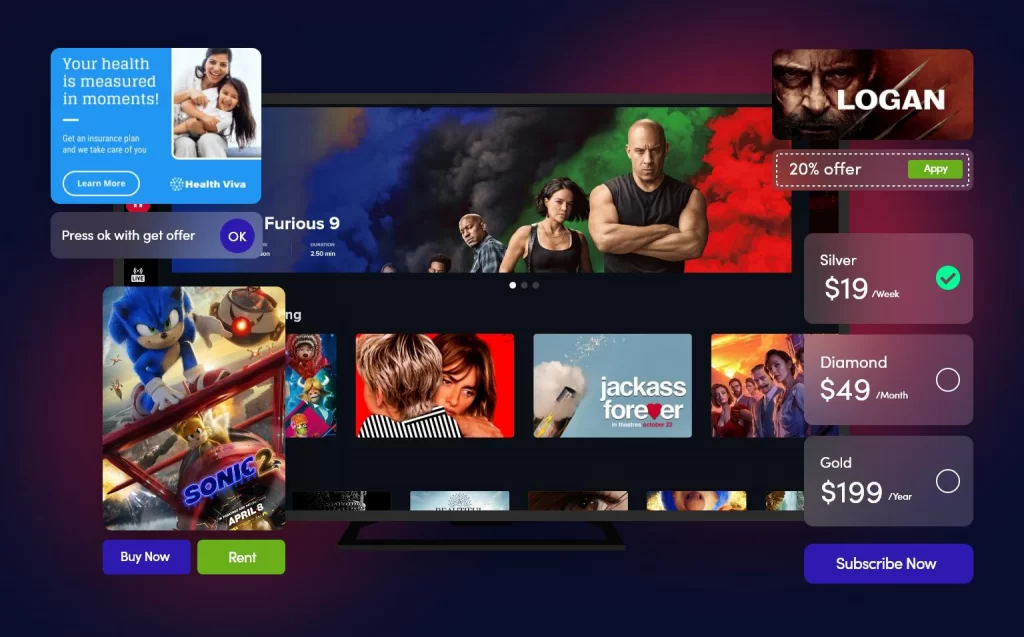6 Simple Techniques For Apollo Group Tv
6 Simple Techniques For Apollo Group Tv
Blog Article
4 Simple Techniques For Apollo Group Tv
Table of ContentsGetting My Apollo Group Tv To WorkRumored Buzz on Apollo Group TvThe Best Strategy To Use For Apollo Group TvThe Best Strategy To Use For Apollo Group Tv
In this circumstance, rather than having three-minute commercial spots during a 30-minute television program, TV programs might change to one where a consumer will be needed to have a monthly membership, to make sure that they cen view targeted banner ads. This kind of advertising and marketing already happens online, and the quantity of information tv companies collect allows them to do similar.Explain the significant patterns amongst the broadcasting and cable television networks. Popular radio shows such as police drama Dragnet and western cowboy series Gunsmoke were adapted for tv, and brand-new Television shows were funded by solitary marketers, simply as radio programs had been.
Today, the television market is much a lot more intricate. Programs are funded by several marketers; programming is regulated by major media corporations; and the 3 major networks no longer dominate the airwaves yet rather share their viewers with countless cord channels. A number of elements make up these patterns within the sector, consisting of technological advancements, federal government regulations, and the creation of brand-new networks.

7 Easy Facts About Apollo Group Tv Described
Also public tv has ended up being based on the influence of marketing. Developed in 1969, (PBS) developed out of a record by the Carnegie Payment on Educational Television, which checked out the role of instructional, noncommercial tv on culture. The report advised that the government money public television in order to supply variety of programming during the network eraa service created "not to market items" but to "improve citizenship and civil service (McCauley, 2003)." Public tv was also intended to offer global accessibility to tv for audiences in backwoods or viewers who can not afford to pay for exclusive tv solutions.
The duration between 1950 and 1970 is historically acknowledged as the. Other than a small part of airtime regulated by public tv, the 3 significant networks (referred to as the Big 3) controlled the television sector, jointly making up greater than 95 percent of prime-time viewing. In 1986, Rupert Murdoch, the head of international firm Information Corp, launched the Fox network, testing the prominence of the Big 3.
Targeting young and minority audiences with shows such as Buffy the Vampire Killer, Moesha, Dawson's Creek, and The Wayans Bros., the brand-new networks intended to attract terminals away from their old network associations. Rather than repeating the success of Fox, UPN and WB struggled to make an influence. Not able to attract numerous associate terminals, the 2 new networks reached fewer families than their larger opponents since they were impossible in some smaller cities.
This decision led the way for the advancement of wire film channels, adding to the exponential development of cord in the 1980s and 1990s. apollo tv group. Further deregulation of cord in the 1984 Cable Television Communications Policy Act got rid of constraints on cord rates, allowing operators to charge what they wanted for cable television services as long as there worked competitors to the solution (a standard that over 90 percent of all cable markets could meet)
Things about Apollo Group Tv

Having actually developed the very first "superstation," Turner expanded his world by starting 24-hour information network CNN in 1980. At the end of the year, 28 national programs solutions were available, look at here and the cord transformation had begun. Over the next years, the market undertook a period of rapid development and popularity, and by 1994 audiences could pick from 94 fundamental and 20 costs cable television services.
Figure 9 - https://apollo-group-tv.mailchimpsites.com/.16 Enhanced competitors from wire channels has created a consistent decline in the networks' audience scores. Throughout the 1950s, the expense of creating a single tv program boosted as shows came to be longer and manufacturing expenses soared. Sponsorship on network television shifted from solitary sponsorship, in which a program was entirely sustained and produced by one marketer, to numerous sponsorship, in which advertisers acquired 1- or 2-minute spots on the show
Each response should be a minimum of one paragraph. Pick among the Big 4 networks and print out its weekly programming schedule. Enjoy the network's prime-time programs over the course of a week, keeping in mind the target group for every show. Observe the marketing sponsors that sustain each program and compare how the product or services fit with the intended target market.
Apollo Group Tv Things To Know Before You Get This

Straight television, commonly described as traditional broadcast television, incorporates cable television and satellite television. It's called "direct" because material adheres to a fixed programming schedule, unlike on-demand content which the private visitor determines to see based on their own choices and schedule. When you ask, "What is linear Television?", consider it as the timeless means of enjoying TV that has actually been around for decades.
Report this page